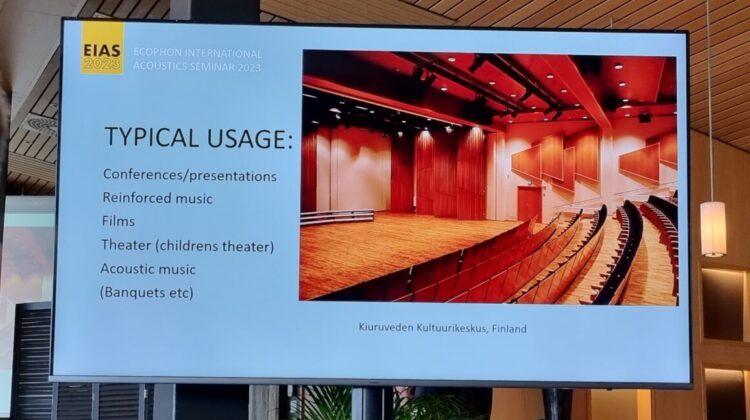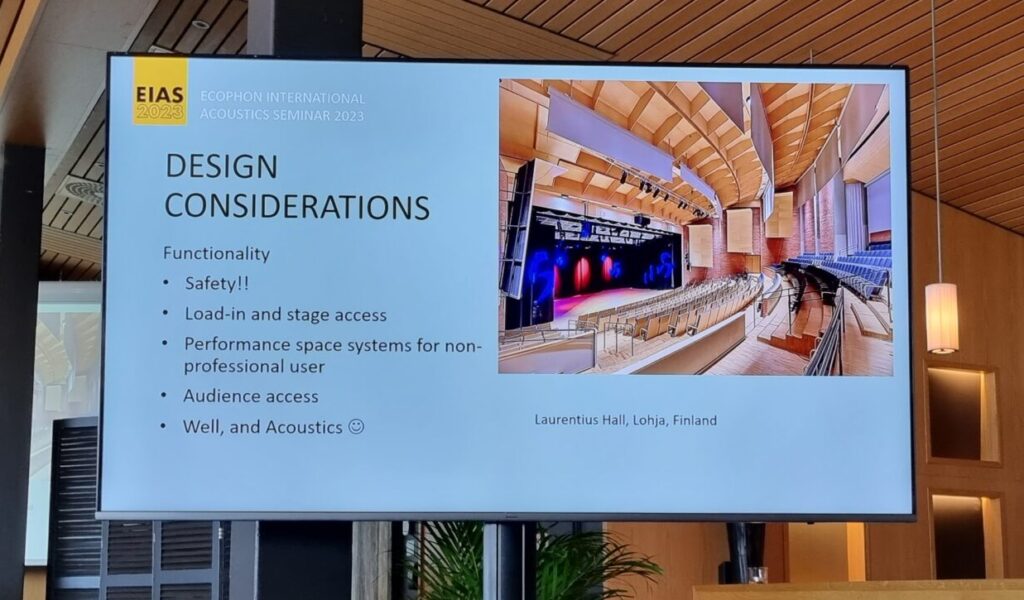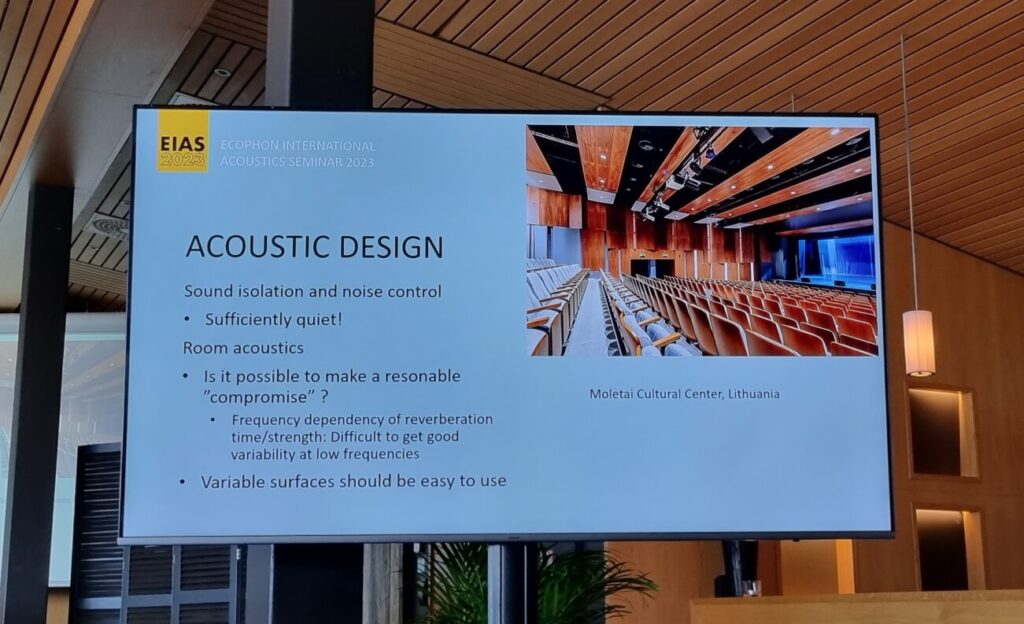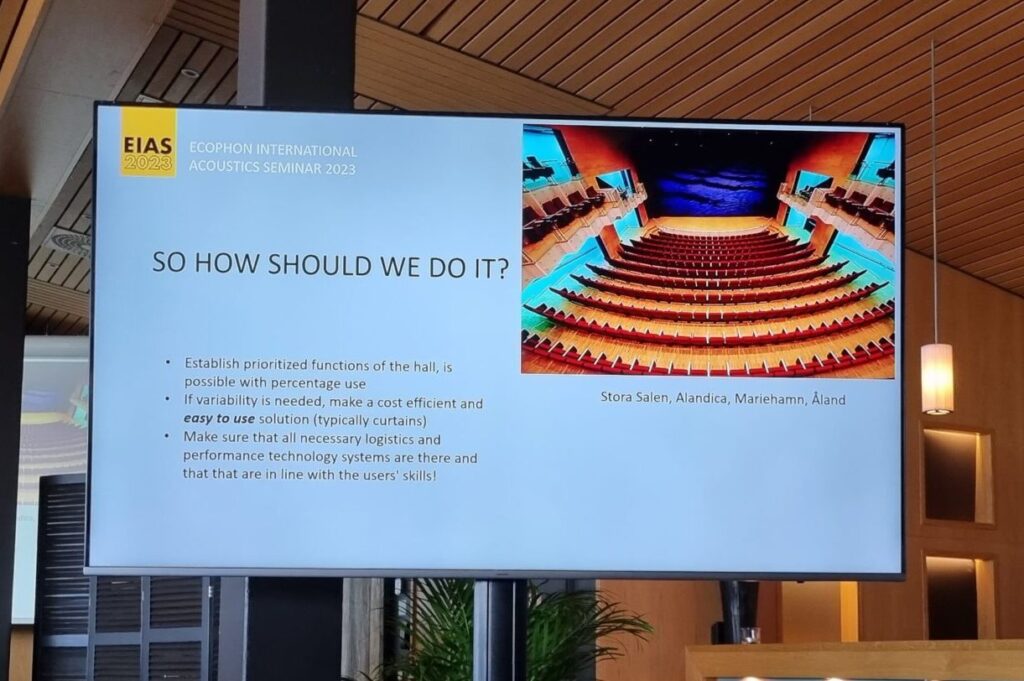
On the second day of EIAS2023 it was time for “multi-acoustian” and keen debater at the seminar – Henrik Möller – to have his speech about the magic of multi-purpose halls and the problems often faced when building them.

Challenging task
Multi-purpose halls are versatile indoor venues designed to accommodate a wide range of events and activities. However, when faced with limitations in space and budget, designing such venues can be a challenging task. Often designed for classical music, they are more frequently used for a lot of other events, with classical music being the least used event.
Limited financial resources pose a challenge for many multi-purpose halls. Striking a balance between maintaining high-quality facilities and being economically sustainable is vital. By focusing on essential areas such as acoustics, stage equipment, and technical infrastructure, these venues can achieve the necessary functionality within the available budget. Effective planning and prioritization are crucial to ensure that both professional musicians and amateurs have an appropriate setting to perform in.
To create a safe and efficient environment, multi-purpose halls must prioritize secure access for performers, backstage load-in, and audience members. Adequate backstage facilities, clear pathways, and well-planned entrances and exits contribute to a smooth and safe experience.

Acoustic design is crucial in multi-purpose halls, Laurentius Hall, Lohja, Finland
Effective acoustic design in multi-purpose halls
Effective acoustic design is crucial in multi-purpose halls. While achieving proper sound isolation is important, creating a completely soundproof environment is not necessary. A compromise can be made by implementing variable acoustic solutions, such as movable curtains or panels. This to adjust the hall’s acoustic characteristics as required for different performances. This approach allows for flexibility while avoiding costly and technically complex solutions.
Engaging in a continuous dialogue with stakeholders is essential for designing a successful multi-purpose hall. By involving musicians, organizers, and other end-users in the design process, their input and preferences can shape the final solutions. This approach ensures that the hall is user-friendly and encourages efficient usage. And eliminates expensive and overly technical features that may hinder its usability.

Moletai Cultural Center, Lithuania
Provide flexible spatial solutions
Multi-purpose halls are impressive facilities that, despite limited space and budget considerations, provide flexible spatial solutions for a wide range of events and musical needs. By balancing acoustic considerations, technical facilities, and audience experience, these halls can adapt to both classical and electronically amplified music.
Their ability to accommodate both professional musicians and amateurs makes them vital hubs for musical activities and community development. It is crucial to engage in dialogue about space usage and potential compromises, making the final solutions user-friendly and efficiently utilized. Avoiding expensive and overly technical solutions that are difficult for ordinary users to operate ensures that the halls are accessible and cost-effective.


Watch Henrik Möller´s presentation here and read more about EIAS 2023 here!

